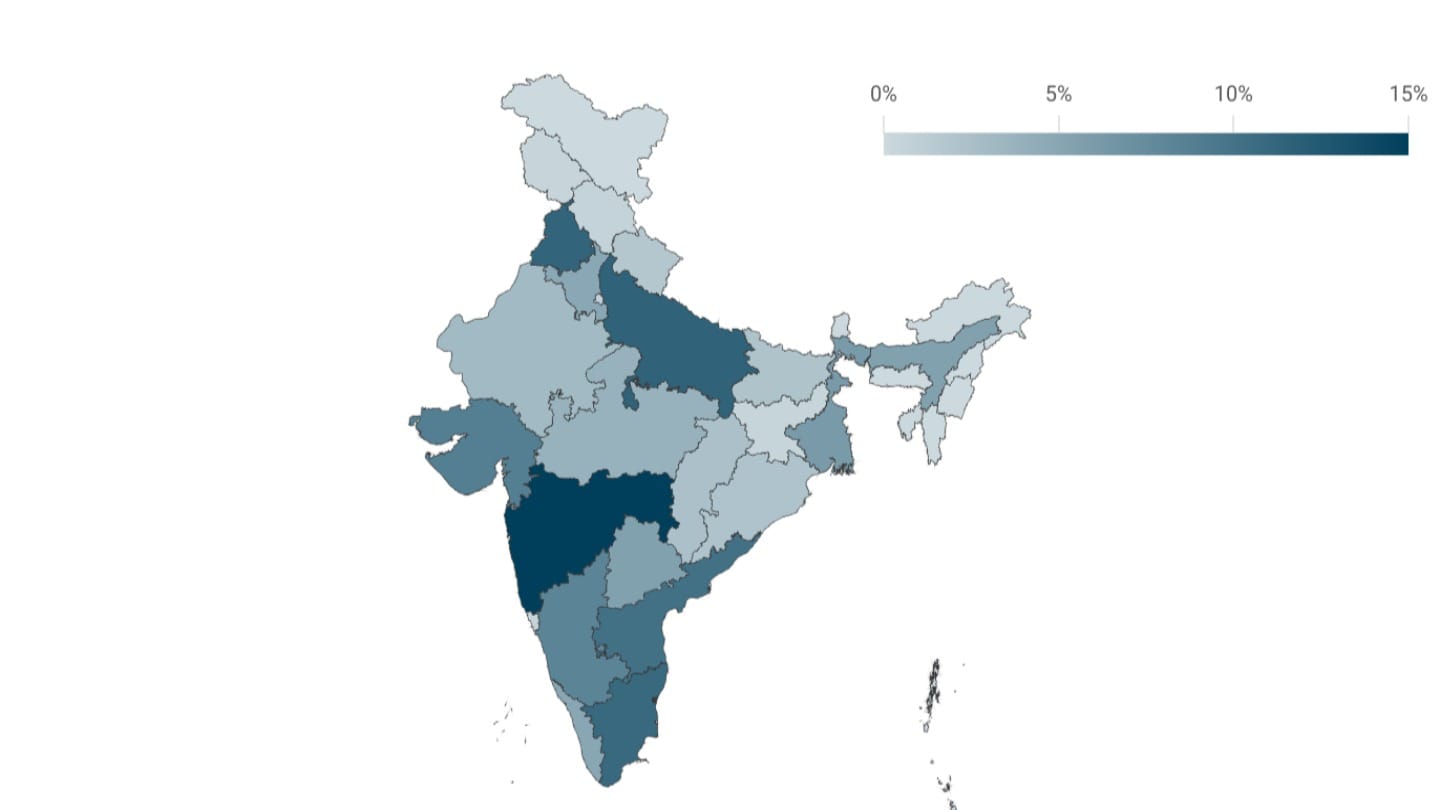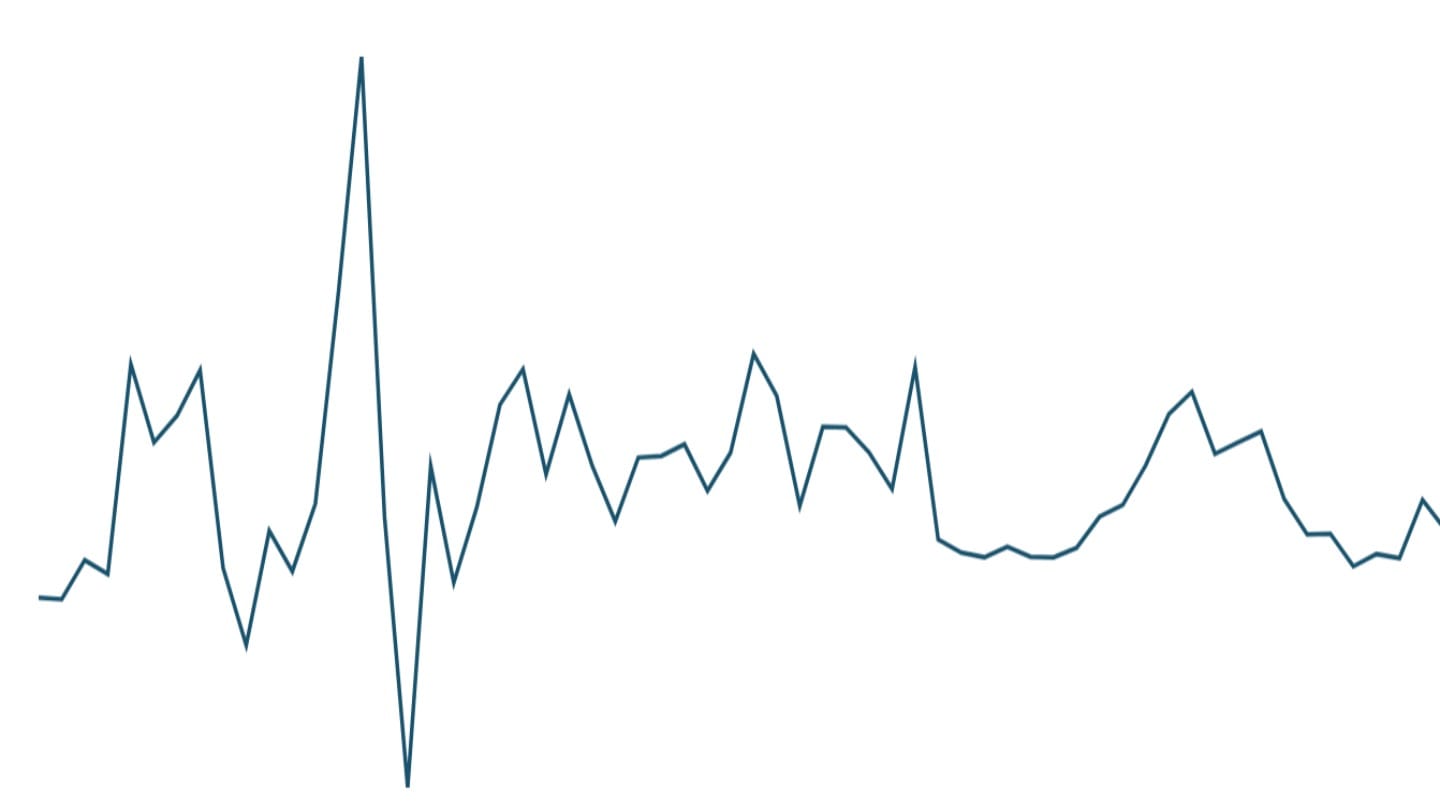The economies of Indian states
India's states differ from each other not only in the sizes of their populations, but also in the sizes of their economies. While all states are growing, the rate of growth varies significantly between regions.
India is the fifth largest economy in the world[1] with a GDP of Rs 300 trillion or $4 trillion.[2]
Economic activity is not uniformly spread throughout the country - among India's 28 states and eight union territories, there are significant differences including in their relative affluence as well as their trajectories of economic development.
Economic size and relative affluence
Similar to the gross domestic product (GDP) at the national level, state economies are measured using net state domestic product (NSDP).[3]
India's economic output is concentrated in the states in the south and the west: they are home to a third of India's population but contribute to more than half of the economic output. Maharashtra is India's biggest state in terms of economic size, with an NSDP of Rs 35 trillion (little less than $400 billion in 2023-24). Maharashtra's economic size is similar to that of South Africa; if it was a country, its GDP would be the 40th largest in the world.[4]
The next four biggest states in economic terms - Gujarat, Tamil Nadu, Karnataka and Uttar Pradesh - each have an economy nearing a size of Rs 25 trillion ($300 billion), similar to the GDP of Portugal.
The states with the largest NSDPs may not be the richest - although Uttar Pradesh and Rajasthan are among the biggest economies in the country, for instance, this is in part a result of their large size. The per capita income, measured by dividing the NSDP by the population, on the other hand, gives a better sense of the relative affluence of states.
India's average per capita income is a little over Rs 200,000 ($2,600).[5] Among India's large states, Karnataka, Telangana and Tamil Nadu have the highest per capita incomes (above Rs 300,000 or $3,620).[6] Their per capita incomes are half of those of South Africa. Bihar is India's poorest large state with per capita income that is close to Rs 50,000 ($650), lower than that of Somalia.
(Neither the GDP, nor the per capita GDP directly measure how much people live on. That is best understood through household surveys that capture consumption, as we've written about here.)
Economic growth among states
While all Indian state economies are growing over time, the pace of growth varies among them.[7] The richer states have grown faster, accounting for a growing share of the total GDP, while the poorer states have grown slower, making up an even smaller slice of the total economy. This has led to a divergence between India's richest and poorest states - instead of the poorest states catching up to the richest states, they are growing further apart.[8]
The southern states now contribute considerably more to the national economy than before.[9] In four decades, their share has increased from 23% to 31%, while that of eastern states has dropped from 18% to 13%, despite both regions having comparable populations.
In per capita terms, this divergence becomes even sharper, because the richer states are also the ones where population growth has slowed much more dramatically.
In 1981, for instance, West Bengal's per capita income was 16% higher than Karnataka's. In 2021, Karnataka's per capita income was 111% higher than that of West Bengal, showing a reversal of positions, and the widening of the gap between the one of the richest and one of the relatively poorer states in India.[10]
Sectoral composition of state economies
In macroeconomic terms, a country or state's economy is usually classified into three broad sectors - agriculture, industry[11] and services. Over time, the Indian economy has steadily moved away from its dependence on agriculture, with services now accounting for the largest share of GDP - 55% as of 2024.
To varying extents, most Indian states too reflect this broad shift. For the most part, India's richest states are the ones where agriculture now accounts for the smallest share of the state's domestic product. In states like Kerala and Karnataka, services contribute more than 60% of the state's GDP.
Gujarat is unusual among richer states, with its manufacturing sector a much larger contributor to its economy than its services sector. Among richer states, Punjab is an outlier in still seeing a large contribution of agriculture to its economy.
[1] October 2024 update of the International Monetary Fund's World Economic Outlook
[2] India's GDP 2023-24 is a little more than Rs 295 trillion, according to the national accounts statistics.
[3] The NSDP or the net state domestic product is the gross state domestic product minus the consumption of fixed capital. The NSDP and GSDP can be used interchangeably to understand the economic sizes of states, if we use the same indicator for all states. DFI sources the data from the Database on Indian Economy (RBI), which sources the data from the Ministry of Statistics and Programme Implementation
[4] Here, the nominal GSDP of Maharashtra is converted to US dollars at the exchange rate prevailing in that year, and is compared with the nominal GDP in US dollars for countries, per the October 2024 update of the International Monetary Fund's World Economic Outlook.
[5] Provisional estimate of per capita GDP for 2023-24.
[6] Although Goa and Sikkim have the highest per capita incomes in the country, this analysis looks at large states only. Large states are defined as those with a population of more than 10 million in 2023 according to official projections.
[7] State domestic product data is available from the 1970s, but not in a uniform and comparable time series. Every few years, a new and better methodology replaces the older one, similar to the rebasing of the national accounts series. Unlike in the case of the national accounts series, there is no official linking factor for states that could be used to compute a consistent time series. Since it is difficult to compare growth rates across different time series, we look at the state's share in the sum total of domestic products of all states (at current prices) as a measure of its economic standing, and compare that over time. For any year, if the data is available from more than one domestic product series, DFI uses data from the newest series.
[8] To measure for convergence/ divergence, we calculate the coefficient of variation among states' per capita incomes, and find that it has gradually risen from 1981 to 2021. This means that the income gap between states has widened over time.
[9] The grouping of states is done in the same way as the National Family Health Survey. Southern states: Tamil Nadu, Karnataka, Kerala, Andhra Pradesh, and Telangana. Eastern states: Bihar, Jharkhand, Odisha and West Bengal. The data accounts for the reorganisation of states.
[10] This concept of relative per capita income has been borrowed from the publication EAC-PM/WP/31/2024 from the Working Paper Series by the Economic Advisory Council to the Prime Minister (EAC-PM).
[11] Industry includes mining, manufacturing, construction, and utilities such as electricity and water providers.




